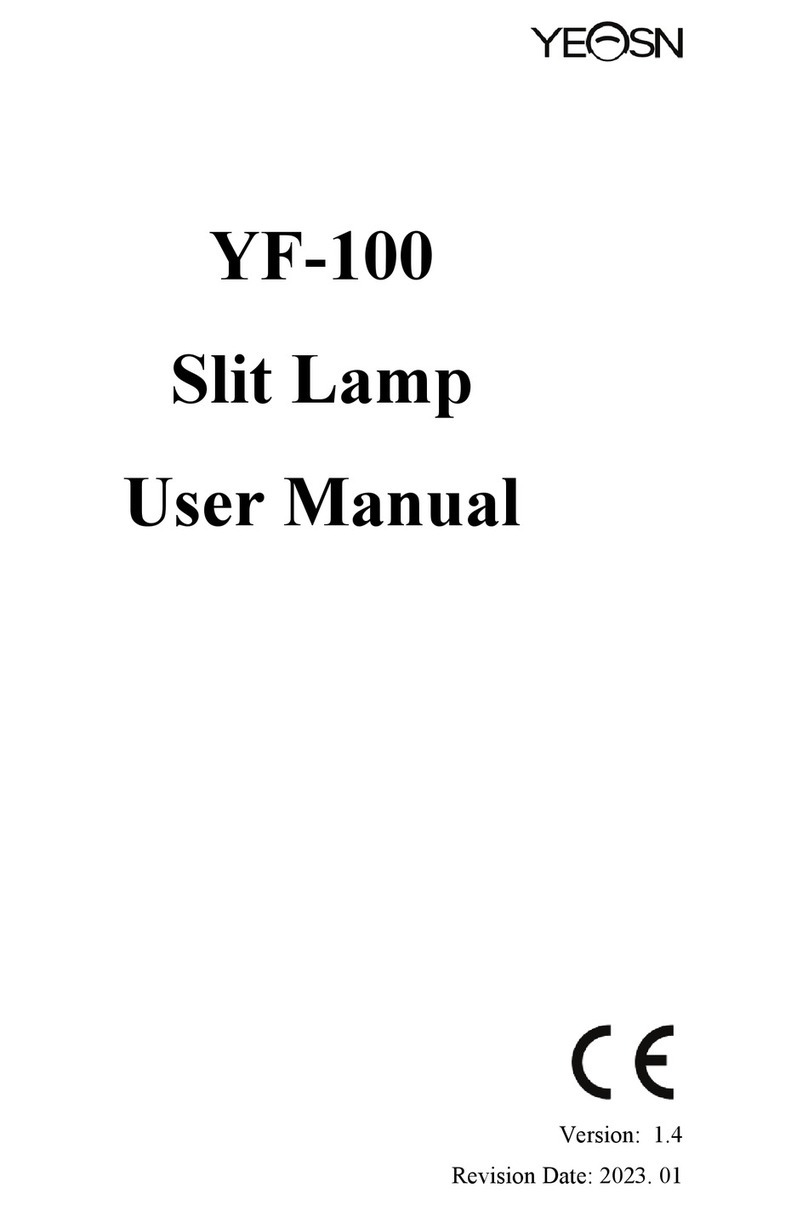5.4 Standard Optometry Procedure ........................................................................ 25
5.5 Binocular Functional Testing Method.............................................................. 51
5.5.1 Crisscross matrix test (presbyopia) ....................................................... 51
5.5.2 Cross test (heterophoria)........................................................................ 51
5.5.3 Cross fixation vision test (heterophoria) ............................................... 53
5.5.4 Cross ring test (heterophoria) ................................................................ 54
5.5.5 Horizontal coincidence test (horizontal image inequality and horizontal
heterophoria)................................................................................................... 55
5.5.6 Vertical coincidence test (vertical image inequality and vertical
heterophoria)................................................................................................... 55
5.5.7 Horizontal Maddox rod test (horizontal heterphoria)............................ 56
5.5.8 Horizontal Maddox rod test (horizontal heterphoria)............................ 57
5.5.9 Clock test (rotatory heterophoria).......................................................... 58
5.5.10 Worth 4 dot test ................................................................................... 59
5.5.11 Stereopsis............................................................................................. 60
5.5.12 Divergence test .................................................................................... 61
5.5.13 Congregation test................................................................................. 62
5.5.14 Near –point congregation (NPC) test .................................................. 63
5.5.15 Near –point adjustment (NPA) test ..................................................... 64
5.5.16 Negative-relative adjustment (NRA) test ............................................ 64
5.5.17 Positive-relative adjustment (PRA) test .............................................. 65
5.6 Customer Self-programming ............................................................................ 66
5.6.1 Self-programming.................................................................................. 66
5.6.2 Run Customized Program...................................................................... 71
6.Troubleshooting........................................................................................................... 76
7.Cleaning and Protection .............................................................................................. 77
7.1 Clean the forehead baseplate ............................................................................ 77
7.2 Clean the nose baseplate................................................................................... 77
7.3 Clean the testing window ................................................................................. 77
7.4 Clean external parts .......................................................................................... 78
8.Maintenance and Care ................................................................................................. 79
9. Environmental Conditions and Service Life .............................................................. 80
10.Environmental Protection .......................................................................................... 81
11.Manufacturer’s Responsibility .................................................................................. 81
12.Symbol Description ................................................................................................... 81




























